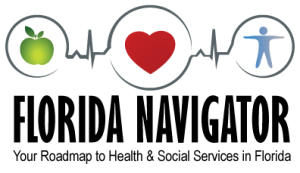The Savvy Senior
Neighbor Watch
By Robert Goodman, MSW
Recently another Century Village resident was found deceased in her apartment. She apparently passed away several weeds earlier. I have been told that this is not an uncommon occurrence in our community.
We are our neighbor’s keeper. We need to create a buddy system in all our buildings. If you don’t see someone for a few days or can’t contact him/her, knowing the person should be home, you need to call Security or ask 911 to check on the person. Building and Association Floor Captains should know the neighbors on their floor, who is ill, who may need help, and be aware of potential problems. Residents of our community have a responsibility to be sure that their Director has a current working key or code and an emergency contact number.
If you suspect a neighbor is having difficulty taking care of him/herself you may want to voice your concern to a friend or member of their family. If no one is taking responsibility and that person is in need of help you can call a local social service agency or notify the state abuse hotline (1.800.96.ABUSE). This can be done anonymously.
Here are some indicators that there may be a need for intervention:
A person not answering the door or phone when he/she is obviously home.
Newspapers or mail piling up.
Unanswered delivery notices.
A foul odor coming from the apartment.
There are services available to help monitor the daily activities of seniors who may have health issues, who live alone, or may be homebound.
Sunshine Daily Telephone Reassurance is a free telephone reassurance program operated by 211 Palm Beach County to check on the well-being of seniors, the homebound or disabled.
Sunshine service is provided seven days a week between the 7:30AM-5:00PM. To register for this service just dial 2-1-1 and say that you would like to start receiving Sunshine calls.
We Care has a telephone reassurance and friendly visitor program for those who are homebound. To volunteer or to refer someone call 487.2827.
Another option is to get a personal emergency response service (PERS) or Medical Alert. There are several types of medical alert systems.
1.Self dialing, non-monitored systems
2. Basic home systems, with or without 2-way voice
3. Cell systems for homes with no telephone line
4. Mobile systems
Many of these services provide devices in the home that connect older adults to a 24-hour call center with the push of a button. The transmitter is typically worn on a neck pendant or wristband, and it sends a signal to a receiver that’s connected to the home telephone line. When the button is pushed, the staff at the call center evaluates the situation, deciding whether to call an ambulance or a designated friend or family member. With most PERS setups, your loved one can talk with the call center staff from anywhere in the house. 1
There are many of these services available. If you’re looking for a personal emergency response system, AARP and other professionals suggest keeping this checklist in mind:
1. Look at several systems before making a decision.
2. Compare costs. Charges for equipment and services typically include a setup fee ranging from $50 to $200 and a monthly fee ranging from $30 to $60. Most companies lease their equipment; a few require purchase. Private insurance or Medicare generally does not cover the devices.
3. Read through the contract carefully and understand the cancellation process.
4. Make sure the provider offers 24/7 customer care (preferably a call center) and technical support. (Ed. Note: Ask if they make daily contact with the customer.)
5. Ask how often and by what procedures they test their system.
Ask if a 30-day free or money back trial period is available2.
It is helpful if the company has local support personnel. Otherwise equipment must be shipped back, if there is a problem.
Ask if any special discount offers are available.
Make sure the company has been in business for a number of years.Ask if the system includes a key holder and lock box. Fire/Rescue explains that these are essential parts of such services.
1source: www.caring.com
2source: www.aarp.org


